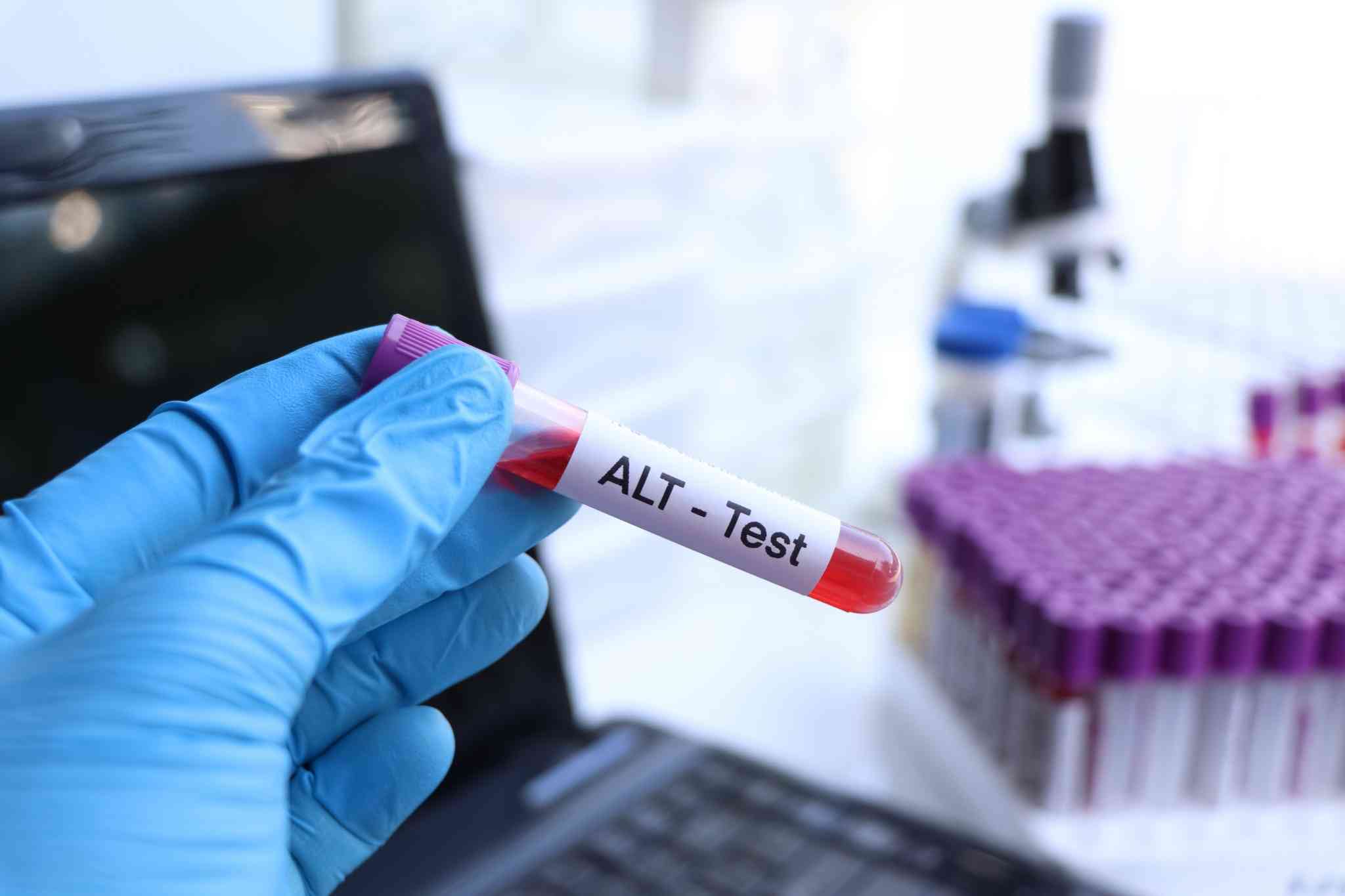Monitoring your liver health is an essential part of maintaining overall well-being, and one important marker healthcare providers often check is alanine transaminase (ALT). [1]
But what exactly does ALT measure in a blood test, and what do normal or abnormal results mean for your health?
What Is ALT in a Blood Test?
ALT stands for alanine aminotransferase, an enzyme primarily found in the liver. [1] This enzyme helps speed up certain chemical reactions in the body. [1] Normally, ALT levels in the blood are low. However, when the liver is damaged or inflamed, ALT can leak into the bloodstream, resulting in higher levels. [1]
Your healthcare provider may request an ALT test to evaluate liver health, diagnose liver diseases, or monitor the effects of treatments that can affect the liver. [1]
What Is the Normal ALT Range?
While reference ranges may vary slightly between laboratories, a typical normal range for ALT is approximately 7 to 55 units per liter (U/L). [2]
Several factors may influence what is considered a “normal” ALT level, including:
- Age: ALT levels tend to be higher in younger individuals. [3]
- Sex: Men generally have slightly higher ALT levels compared to women. [3]
- Body mass index (BMI): Obesity may slightly raise ALT levels. [4]
ALT Normal Range by Age and Gender
| Age Group | Female (U/L) | Male (U/L) |
|---|---|---|
| <3 years | 13 – 45 | 13 – 45 |
| 3 – 12 years | 15 – 35 | 15 – 35 |
| 13 – 18 years | 12 – 26 | 15 – 47 |
| >18 years | 10 – 49 | 10 – 49 |
(Source: UNC School of Medicine[1] )
Note: Always consult with your healthcare provider for interpretation of your specific test results.
What Does It Mean If Your ALT Is High or Low?
Normal ALT Levels
If your ALT falls within the standard reference range, it generally suggests that your liver is functioning well. [1] However, lab ranges are not absolute, and “normal” can vary based on individual factors. [1]
Elevated ALT Levels
Mildly elevated ALT levels may not necessarily indicate severe liver damage. Sometimes temporary increases occur due to physical exertion, certain medications, or minor infections. [1]
Significantly high ALT levels, however, often signal underlying liver issues such as [5]:
- Nonalcoholic fatty liver disease (NAFLD)
- Chronic hepatitis B or C
- Alcohol-related liver disease
- Hemochromatosis (iron overload disorder)
Medications like statins, antibiotics, and pain relievers (acetaminophen) may also elevate ALT levels. [5]
Low ALT Levels
While less common, low ALT levels are usually not a cause for concern. They may be seen in [2]:
- Severe liver damage where liver enzyme production decreases
- Vitamin B6 deficiency
How to Manage and Lower Elevated ALT Levels
If your ALT levels are high, there are proactive steps you can take to support your liver health:
- Maintain a healthy weight: Reducing body fat can significantly lower ALT levels [4].
- Limit alcohol consumption: Alcohol can inflame and damage liver cells. [5]
- Review medications: Some prescriptions and over-the-counter drugs may affect liver enzymes [5]. Talk with your healthcare provider.
- Adopt a liver-friendly diet: Focus on vegetables, fruits, whole grains, and lean proteins while limiting saturated fats, refined sugars, and processed foods. [6]
- Manage underlying health conditions: Conditions like diabetes and high cholesterol should be treated to prevent liver complications. [5]
Regular monitoring and lifestyle changes can often bring elevated ALT levels back into a healthy range.
ALT vs. AST: What’s the Difference?
While ALT is specific to the liver, AST (aspartate aminotransferase) is another enzyme found in several organs, including the liver, heart, and muscles. [7] Healthcare providers often order ALT and AST tests together to get a clearer view of liver health.
Stay Proactive About Your Liver Health With Everlywell
Understanding your ALT levels is a crucial step in monitoring your liver health and overall wellness. Whether your results fall within the normal range or show signs of elevation, having access to reliable testing and clear information empowers you to take proactive steps.
For convenient, accurate, and private liver enzyme testing from the comfort of your home, consider Everlywell 360. With our easy-to-use at-home lab tests, you can monitor your health anytime and share results directly with your healthcare provider.
Frequently Asked Questions
What Is a Healthy ALT Range by Age?
Generally, a healthy ALT range for adults is 7-55 U/L; however, slight variations exist depending on age, sex, and laboratory methods. [2]
Is a Low ALT Level Better Than a High One?
Very low ALT levels are typically not dangerous. However, extremely low readings could signal malnutrition or severe liver injury. [2]
Can a High ALT Level Ever Be Harmless?
Yes, transient high ALT can result from muscle injury, intense exercise, or minor infections and may not indicate permanent liver damage. [1]
What Is a Good ALT Level for Women?
A typical healthy ALT level for women is 13-49 U/L, slightly lower than for men. [8]
Is an ALT Level of 70 Concerning?
An ALT level of 70 U/L is mildly elevated. While it may not indicate serious liver disease, it warrants discussion with a healthcare provider. [2]
Which Medications Are Known to Increase ALT Levels?
Common medications include statins, isoniazid, pyrazinamide, rifampicin, ibuprofen, or dapsone. [5]
